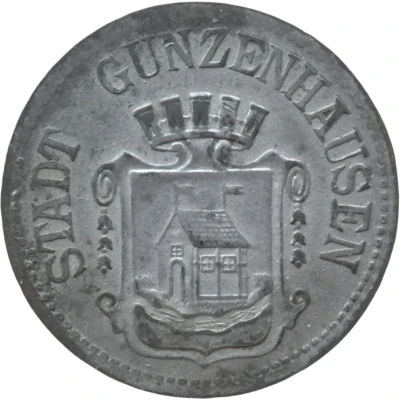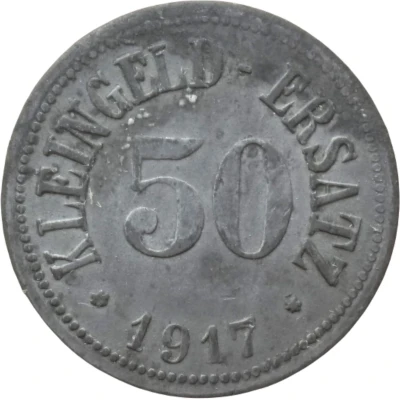


© Willem63 (CC BY-NC-SA)
50 Pfennigs - Gunzenhausen
1917 year| Zinc | 3.0 g | 23.5 mm |
| Issuer | City of Gunzenhausen (Federal state of Bavaria) |
|---|---|
| Emperor | William II (Wilhelm II) (1888-1918) |
| Type | Standard circulation coin |
| Year | 1917 |
| Value | 50 Pfennigs (50 Pfennige) (0.50) |
| Currency | Mark (1914-1924) |
| Composition | Zinc |
| Weight | 3.0 g |
| Diameter | 23.5 mm |
| Thickness | 1.1 mm |
| Shape | Round |
| Technique | Milled |
| Orientation | Medal alignment ↑↑ |
| Demonetized | Yes |
| Updated | 2024-10-04 |
| Numista | N#341517 |
|---|---|
| Rarity index | 94% |
Reverse
Beaded rim, legend and date surrounding denomination centered
Script: Latin
Lettering:
KLEINGELD - ERSATZ
50
✶ 1917 ✶
Edge
Plain
Interesting fact
The 50 Pfennigs coin from Gunzenhausen, Bavaria, issued in 1917, is interesting because it was made of zinc, a material that was commonly used for coinage during World War I due to its low cost and durability. This coin is a rare example of a circulating coin made of zinc, as most coins from this time period were made of more valuable metals like silver or gold. Additionally, the fact that it weighs 3.0 grams makes it stand out from other coins of similar denomination, which typically weighed less.